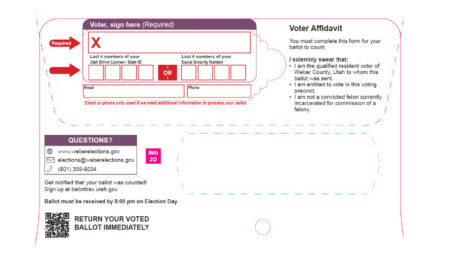University of Utah study examines link between suicide risk, genetics

KERA WILLIAMS, Special to the Standard-Examiner
A candle is held during the World Suicide Prevention Day Candlelight Vigil at Mount Ogden Park in Ogden on Thursday, Sept. 10, 2015.SALT LAKE CITY — People who suffer from bipolar disorder and are genetically predisposed to post traumatic stress disorder may have a higher risk of dying from suicide, according to a study led by research scientists at the University of Utah.
The study investigated risk factors for suicide completion and not just suicide attempts, said Dr. Eric Monson, lead author of the study and co-chief resident in the department of psychiatry at the University of Utah, who indicated the findings could lead to better screening measures to detect prior trauma from those diagnosed with bipolar disorder and help identify people who are at the greatest risk of suicide death.
“Rates of death by suicide are 10 to 30 times higher for people with bipolar disorder than for the general population. Suicide rates in Utah are about 22 per 100,000, or roughly 660 per year,” Monson said. “We found in this study that a combination of prior trauma, a genetic predisposition for PTSD and a diagnosis of bipolar disorder may put an individual at greater risk of death by suicide.”
Monson said the findings showed 50% of those studied with bipolar disorder died from suicide without ever attempting it before.
“The focus group was bipolar, but within that disorder we wanted to see if they had other factors on top of it, such as PTSD and severe anxiety,” Monson said. “Those with past trauma as well as major anxiety died from suicide a lot more than the other groups we studied. That’s not totally surprising because anxiety is pretty closely linked to PTSD.”
The research team, which included Monson, U of U psychiatry professor Hilary Coon and Virginia Willour, a psychiatry professor from the University of Iowa, used several thousand DNA samples from Utahns who died from suicide, along with electronic medical records. They also used data from the National Institute of Mental Health Genetics Initiative. Several hundred people who died had been diagnosed with bipolar disorder and were shown to have a higher rate of PTSD diagnoses.
According to brainline.org, PTSD is a mental health illness some people develop after witnessing or experiencing a traumatic event, such as an accident, sexual assault, combat or natural disaster. These events can cause flashbacks, nightmares or triggers. Anyone can develop PTSD, but a number of factors play a role, such as whether the traumatic event was long lasting. In the United States, it is estimated that about seven or eight out of 100 people will develop PTSD during their lifetime. Approximately 8 million adults have PTSD during a given year. About 10% of women and 4% of men develop the disorder.
“People who have PTSD tend to have more severe disease than other people, and they tend to be harder to treat with medications,” Monson said.
The study showed some promising results, Monson said, but there’s still the issue of helping people who are suicidal. His own sister took her life when she was 15 and Monson was only 7. He also lost three colleagues to suicide.
“That was an important aspect of my life that drives me to keep digging. Suicide is very complex and there are no doubt other features such as environmental factors, toxins and chronic stress,” he said. “There’s also decent evidence that elevation may play a part. If you look at a map, you’ll see the Suicide Belt is in the Rocky Mountain range. That includes Utah, Nevada, Wyoming, Colorado and Idaho. When you are at a higher elevation, your oxygen level is lower and that can have an effect on neurotransmitters in the brain.”
Monson also said while the study is important, it doesn’t mean a person will definitely end up committing suicide — and, he added, suicide is preventable.
“We have limited mental health resources, but suicide is inherently preventable and we should be taking every measure to help those at risk,” Monson said. “I think it’s critical now that we in the medical field ask people more about serious traumatic exposures in their lives, but it’s also important for people to be direct if they suspect someone might try to commit suicide. There’s a difference in saying, ‘Do you feel like you might hurt yourself,’ and ‘Are you having thoughts about taking your life.’ Please be as straightforward as possible.”
But if everything you do to try to help someone fails, Monson said, it’s critical not to blame yourself.
“It’s not your fault. It’s never as simple as thinking you might have said something or you might not have said something,” he said. “Please don’t get hung up on self-blame.”
What to watch for
September is suicide awareness month. Here are common warning signs illustrated by someone thinking about suicide:
- Increased isolation from the world.
- Getting affairs in order.
- Giving things away.
- Acting anxious, tired or depressed.
- Talking about being a burden to others.
- Feeling hopeless or feeling like they have no purpose.
- Talking about wanting to die.
- Displaying extreme mood swings.
- Increase in the use of alcohol or drugs.
- Rage or recklessness.
Other resources:
- National Suicide Prevention Lifeline, 1-800-273-8255
- https://intermountainhealthcare.org/blogs/topics/live-well/2018/04/suicide-prevention-resources-in-utah/



